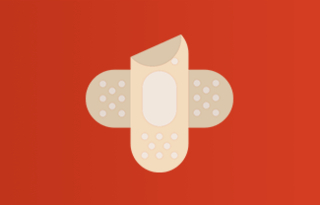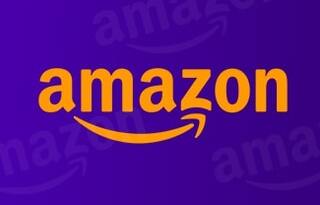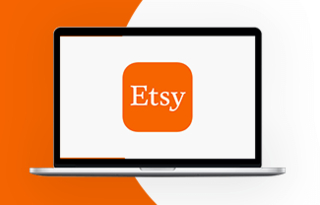
The Chinese Giant and the American Colossus find themselves at loggerheads, each determined to drive forward its own vision: a 'pure' marketplace on one hand; 'retailer logic' on the other.
Alibaba is often mistakenly thought of as 'the Chinese Amazon'. It's easy to see how people arrive at this description: after all, the two companies each dominate their respective primary markets. In 2023, Amazon's total revenue grew 12% year-over-year, going from $514 billion to $575 billion. Alibaba's revenue reached $38.46 billion (280.15 billion yuan), representing a 7.6% increase. Amazon has over 315 million customers as of October 2024. Alibaba had 1.31 billion annual active customers in 2023.
The Distributor vs The Marketplace

But beyond these figures, the two companies follow notably different business models.
Amazon makes the bulk of its revenue on items from its own inventory. 'Amazon buys and resells stock: it's retailer logic', explains Yves Martin, director of analysts Wavestone and a specialist in mass consumption.
In 2023, third-party seller services generated $140 billion in revenue, accounting for approximately 24% of Amazon's total net sales.
As a retailer, Amazon has really made its mark with things like its Kindle e-reader, which it followed up with a range of tablets and even smartphones. It has a vast fleet of trucks, planes, and boats - to which it will soon add drones. Since last year, Amazon Prime Now, a service offering delivery in as little as an hour from ordering, has been offered in cities from Paris to Singapore (it first appeared in Manhattan in 2014). Meanwhile, Amazon Fresh now offers delivery of fresh produce in several German cities, as well as London and Tokyo.
Of course, pinning your reputation on ever-shorter delivery times means continual investment in infrastructure. Amazon has expanded its warehouse network by leasing, buying, or announcing the addition of 16 million square feet of warehouse space in 2024. The company's globe-spanning network of warehouses is also constantly expanding.
All told, Amazon has built a solid reputation not just for speed but also for quality control. But the financial cost of this comes in the form of human resources: as of the end of 2023, Amazon employs 1,525,000 people. The company's workforce decreased from a peak of 1,608,000 in 2021. Alibaba's total number of employees as of March 31, 2024, was 204,891.
In combining low prices with heavy investment, Jeff Bezos has long constrained his group's profit margin in favor of maximizing growth of market share. But in the last quarter of 2024, Amazon's profits increased by 88% to $20 billion, and revenue grew by 10% to $187.8 billion. Amazon Web Services (AWS) remains a significant profit driver, with revenue increasing by 19% to $28.8 billion and contributing half of Amazon's total operating profit at $10.6 billion. For the first quarter of 2025, Amazon anticipates revenue between $151 billion and $155.5 billion.
Alibaba's revenue for the third quarter of fiscal year 2025 reached RMB 280.15 billion, an 8% year-over-year increase. Net profit attributable to ordinary shareholders was RMB 48.945 billion (US$6.705 billion). Alibaba has over 1.3 billion annual active consumers across its platforms, including Taobao, Tmall, and AliExpress
But it's important to remember that Alibaba restricts itself to the role of intermediary: as Yves Martin puts it, 'it's more of a technical platform in the first place, like a virtual shopping mall.' The company doesn't control the delivery of products, and this makes for lower costs and bigger margins. In fiscal year 2024, Alibaba reported a revenue of $33.47 billion, marking a significant increase from earlier years, with profits continuing to be substantial
Alibaba's platform is divided into three main segments: Taobao for private sellers and SMEs (CtoC), Tmall for major brands and distributors (BtoC) and Alibaba for wholesale (BtoB). 'The difference between Amazon and us is that Amazon is more an empire that controls, buys
and sells by itself ', founder Jack Ma explained in an interview to US TV channel CNBC last January, adding that in contrast, Alibaba's 'philosophy is that we want to be an ecosystem.'
Subscription vs commission and advertizing

So, when we break things down, how do these two giant companies get paid from their activities? Once again, their models contrast with one another.
Alibaba's commission rates are low. 'On average we take between one and five percent, depending on the type of product. Other marketplaces tend to take between 12 and 15 percent in Europe', says Sebastien Badault, CEO of Alibaba France, of the Tmall B2C platform.
Which means that on actual sales, the Chinese group takes rather slim pickings. But it makes up for this with the other things it sells: like Amazon it offers cloud services, but it also monetizes its audience, especially via the C2C Taobao platform, which has becomes the largest of Alibaba's segments since its launch in 2003. The mechanism is simple: Taobao is able to put highly targeted advertising in front of the eyes of its colossal 930 million users - a user-base attained partially by the fact that Taobao charges no commission on sales.
By contrast, as of 2025, Amazon Prime has over 200 million subscribers worldwide. In the U.S. alone, there are approximately 180.1 million Prime users, which accounts for 75% of Amazon customers in the U.S.
Amazon Prime remains a popular subscription service, and its success is due to the multiple benefits it offers at an affordable price. These benefits include free delivery and access to services like Prime Video and Amazon Music. Amazon Prime Video had 210 million users in 2023.
The West vs Emerging Markets

'Our levers and our strengths are the developing markets' - that's the conclusion of Alibaba France CEO Sebastien Badault. The group's focus on Asia has a simple rationale: most homes there are so far not connected to the Internet. Badault quotes figures saying that only 30% of people in India and 50% of those living in China can get online. So whereas, in the United States and Europe, the pie is already on the table and being fought over, in Asia, much of it is still in the oven: the one who waits patiently by the oven door will have a good chance of gobbling the lot.
This, then, is why the Chinese giant likes to invest in markets similar to the one it emerged from. Last year it bought the Southeast Asian e-commerce platform Lazada, which operates in six markets including Vietnam, Thailand and Singapore, for $1bn. The sale gave the company access to a reservoir of some 650m new customers - a big step along the way to the group's ambition of creating an 'ecosystem' of two billion people, with Alibaba in charge of managing the relationships between buyers and sellers, brands and products.
But while Alibaba stands to inherit the world's fastest-growing markets, the technical and commercial achievements of Amazon should not be understated. It has gained a perhaps unparalleled mastery of supply chains, built a market-leading repertoire of cloud services, and created a successful hardware range in its Kindle brand that neatly dovetails with the content it sells.
Both Amazon and Alibaba clearly want to be the go-to e-commerce and marketplace destination both for people in the markets they already dominate, and beyond. But as we've seen, the way in which the two companies want e-commerce to work differs dramatically - and because these organizations are so large and powerful, they have the ability to shape how people shop, as well as just responding to demand. As we've also seen, both companies have ambitions way beyond their core businesses.
In some respects, the behaviour and approaches of giant corporations is something that can be interesting, but not directly relevant to the overwhelming majority of businesspeople who work on a much smaller scale. But there are also a huge number of ways in which what these behemoths do is directly relevant to marketplace and e-commerce entrepreneurs of all sizes - and that's why it would probably be smart to continue to play close attention to them.










